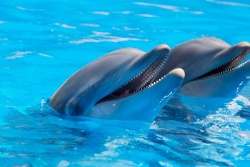Wānanga Revives Local Pūrākau And Stories For Native Forestry Planning And Seed Collection
Restoring the land to native forest, currently in pine is the intergenerational vision of the Ngāti Hine Forestry Trust. The Trust held a wānanga in March as part of a four-year kaupapa - He Ringa Ahuwhenua, He Hanga Mahi as it works with the people to shape and progress the strategy.
The kaupapa looks to regenerate rakau Māori through rangahau and research, wānanga and native forestry trial sites. It aims to answer a key research question - He aha ta Te Tū o Ngāti Hine hei arahi i te whakaora i ngā ngaherehere o Hineāmaru?
The wānanga held at Matawaia marae followed on from a Rangahau Planning Hui held at Motatau marae in 2022 and virtual wānanga held online in 2021. Around 60 people gathered to hear about the project and contribute to the design aspirations of native forestry trial sites. The goal was to develop and plan for mātauranga led and science supported approach to the native forest trial sites with connected whānau (shareholders) and interested entities.
The day included a presentation from Toby Stovold and Elizabeth Dunningham from Scion and how the Crown forestry research institute has supported the project to date, particularly with seed propagation, being cared for and sown. Hineāmaru Ropati presented an inspirational indigenous hallmark of excellence framework known as Hua Parakore that includes the application of whakapapa, wairua, mana, maramatanga, te ao turoa and mauri. Jack Vallings then provided a seed exhibit of various native trees with opportunities for attendees to taste, learn and understand more about native trees seeds.
Wānanga discussions included whānau sharing history around some of the intended trial sites to inform what native trees were best suited for those areas. The sharing of history from whānau is a critical part of the collective approach to understanding Ngāti Hine mātauranga and kaupapa Māori approaches within the project. The wānanga provided a space to not only discuss rejuvenating the forest, it was an opportunity to revitalise the stories of the ngahere, whenua and whakapapa.
Attendees urged the project team to consider the wider environment. While native trees, ngāhere Māori, seed collection and trial site development featured in the wānanga, te mauri o te wai, Ngāti Hine repo, wetlands, riparian and pest control were also underscored. Discussions included the multitude of rivers that connect to the Bay of Islands and Kaipara harbours. Those harbours being fed from Ngāti Hine awa and the impact the forests have on the rivers.
It was highlighted that Ngāti Hine has one of the biggest wetlands in the country being the home of the tuna, matuku and pukeko. Attendees urged the project team to consider how the wetlands and repo have progressively dried up and how that ties into the strategy.
He Ringa Ahuwhenua, He Hanga mahi kaupapa started in October 2021 and has since seen a change in kaupapa project managers with Peter Prime as the new Kaupapa Project Manager, supported by Amadonna Jakeman as Mātauranga Integration Rangahau Lead. A new Puna Mātauranga group with Hineāmaru Ropati and Moe Milne was recently established to ensure the project is Ngāti Hine mātauranga led that is supported by Scion science. A learning trial site at Pukenehunehu in Matawaia was established in 2022 with five other trial sites identified for planting in 2023 and 2024 (dependent on planting supply and other variables).
He Ringa Ahuwhenua, He Hanga Mahi came from a consistent narrative from shareholders being a shift from dominant pine trees to a mosaic quilt - te kuira approach with native trees dominating. The One Billion Trees (1BT); Te Uru Rākau – New Zealand Forest Service policy provided an opportunity to conduct this project as it acknowledges mātauranga Māori and kaupapa Māori approaches as a priority to planting.


 Gordon Campbell: On The Costs Of Regulating Cost, And Burkina Faso As A Role Model
Gordon Campbell: On The Costs Of Regulating Cost, And Burkina Faso As A Role Model Dog Lovers of Monte Cecilia: Locals Challenge Puketāpapa Local Board And Auckland Council’s On-Leash Policy Change For Monte Cecilia Park
Dog Lovers of Monte Cecilia: Locals Challenge Puketāpapa Local Board And Auckland Council’s On-Leash Policy Change For Monte Cecilia Park Maritime New Zealand: Three Rescued In High-Seas Operation After Vessel Abandoned North Of New Zealand
Maritime New Zealand: Three Rescued In High-Seas Operation After Vessel Abandoned North Of New Zealand Health Coalition Aotearoa: Experts Urge Fix As Government Expands Failing Lunch Scheme To Primary Schools
Health Coalition Aotearoa: Experts Urge Fix As Government Expands Failing Lunch Scheme To Primary Schools Helen Clark Foundation: The Helen Clark Foundation Launches Honorary Fellow Programme
Helen Clark Foundation: The Helen Clark Foundation Launches Honorary Fellow Programme Department of Conservation: Call For Public Information On Auckland Marine Mammal Cases
Department of Conservation: Call For Public Information On Auckland Marine Mammal Cases New Zealand Jewish Council: NZ Jewish Council Clarifies Position - Advocating For Safety And Accountability, Not Censorship
New Zealand Jewish Council: NZ Jewish Council Clarifies Position - Advocating For Safety And Accountability, Not Censorship


